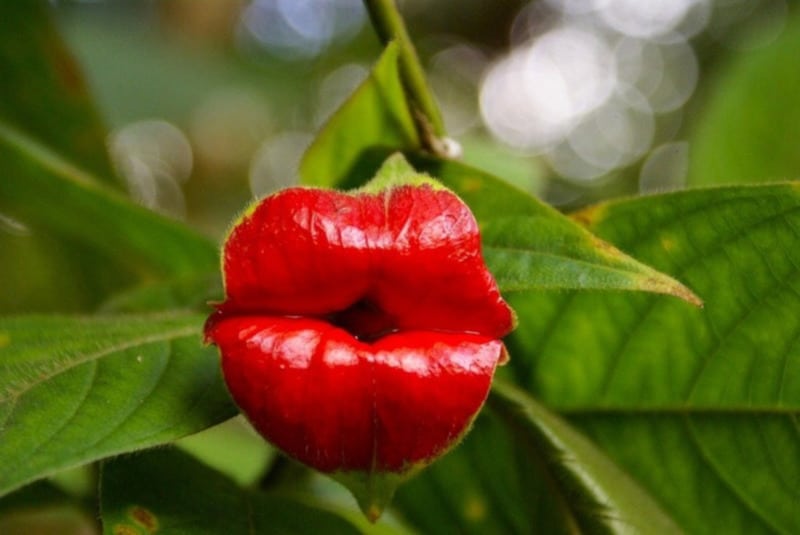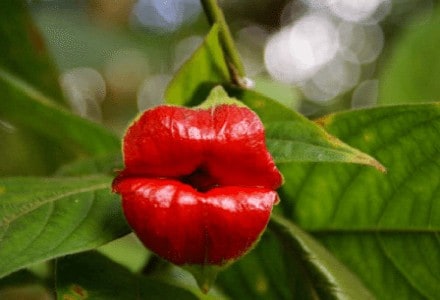
Hooker’s Lips Facts
- Most notably, the incredible plant bearing the common name of Hooker’s Lips plant only maintains this unique shape for a brief time. Believe it or not, though, the highly distinctive shape actually does serve an important purpose.
- In addition to being a conversation starter, the astonishing species plays its own vital role in its environment. That holds true because the eye-catching flora remains one of the few acceptable host plants for the rare golden silk moth.
- The inhabitants of its endemic range have also discovered multiple uses for the distinctive species. Given its unique form, it makes a popular gift Valentine’s Day. Various parts of the tree have also been discovered to have medicinal properties.
- Sadly, the truly fascinating Hooker’s Lips has now become Critically Endangered. It was moderately rare, to begin with. Now, its numbers and range have both been severely diminished by the dual threats of climate change and habitat loss.
Related Articles
Happy Alien Naked Man Orchid Doll’s Eye
Photographer: IROZ
CC License: https://bit.ly/3lbsyYC
Hooker’s Lips Physical Description
Confusingly, the Hooker’s Lips plant technically must be called a tree. The confusion understandably stems from the fact that it forms a very diminutive one. This holds true due to the fact that this most unusual species rarely exceeds 10 ft (3 m) in height.
What’s technically the trunk of the plant further grows comparatively thin. As a result, this supporting structure often becomes bent slightly from the weight of the foliage. Likewise, the leaves of the species also grow comparatively long and thick in design.
One thing in particular stands out the sharpest about the species. The most noteworthy feature of the tree consists, obviously, of the bright red lip-like structure. These actually consist of bracts that form temporarily, prior to the appearance of the flowers.
Additionally, the unique shape of these remarkable blooms favors the hummingbirds that serves as its primary pollinator. While the bracts present as red, the flowers show a bright white in color. This further adds to the attraction for pollination.
Due to the range in which the amazing Hooker’s Lips developed, the distinctive small trees bloom from December to March. The flowers also become quite aromatic in nature. The berries that appear after the flowers stay small and dark blue or black.
- Kingdom: Plantae
- Class: Angiosperm
- Order: Gentianales
- Family: Rubiaceae
- Genus: Psychotria
- Species: Psychotria elata
Photographer: Konelix
CC License: https://bit.ly/2WtFw9H
Hooker’s Lips Distribution, Habitat, and Ecology
The astounding Hooker’s Lips evolved endemically to a large portion of the world. More specifically, this consists of a very specific portion of both South and Central America. This range principally includes the countries of Costa Rica, Ecuador, Panama, and Colombia.
The deep portions of the rainforest comprise the native environment of the unusual plant. Given the botanical diversity of this area of the world, that fact comes as no surprise. But, while the tree evolved as a tropical species, it has proven adaptable to temperate climates.
In addition to its visual appeal, it has provided medicinal uses. Local inhabitants learned to make use of the bark and leaves. These can be used to treat coughs, earaches, and skin rashes. The indigenous Kuna Indians traditionally used the plant for treating dyspnea.
Sadly, the plant known as the Hooker’s Lips holds a truly lamentable position. The species’ numbers appear to be decreasing quickly. This seems to be due to the ongoing rainforest deforestation. As a result of this, its available habitat has greatly diminished.
Species Sharing Its Range
Peach Palm Cycad Cattleya Orchid
Check out our other articles on Breathtaking Asian Species, Puffin, Berca Mud Volcanoes, Marbled Cat, Picasso Bug, Indian Bullfrog, Hawksbill Sea Turtle, Glass Squid

